










| Common Mallard (Anas platyrhynchos (Linnaeus, 1758)) |











|
|
Scientific name: Anas platyrhynchos (Linnaeus, 1758) Common name: Common Mallard French name: Canard colvert Order: Anseriformes Family: Anatidae Size: 51 to 62 cm, 850 to 1400 g. Habitat: Ponds, lakes, swamps, ditches and pools in town. Food: Water plants, seeds and roots and insects, worms and frogs. Nesting: The Common Mallard builds its nest on the ground or in a willow. The female lays 7 to 16 eggs in March. Migration: Resident in France, many northern birds move to the south in winter. Geographic area: Temperate and subtropical areas of Europe, Asia and North America. Central America and the Caribbean's. Australia and New Zeeland. |
The Common Mallard is the best known and most widespread wild duck. The male is greyish brown with a dark green head. The bill is yellow with a black tip. There is a thin white stripe around the neck and the breast is purple-brown. The female is brown with small yellow patches. The bill is brown with yellow edges. During about four weeks of non-breeding time, at the end of summer, the males are the same colour as the females. |
| [To know more about the Common Mallard] [Next picture] [Top] |

|
Under the sun light, the head of the Common Mallard shows beautiful blue and green glints. |
| [To know more about the Common Mallard] [Next picture] [Previous picture] [Top] |
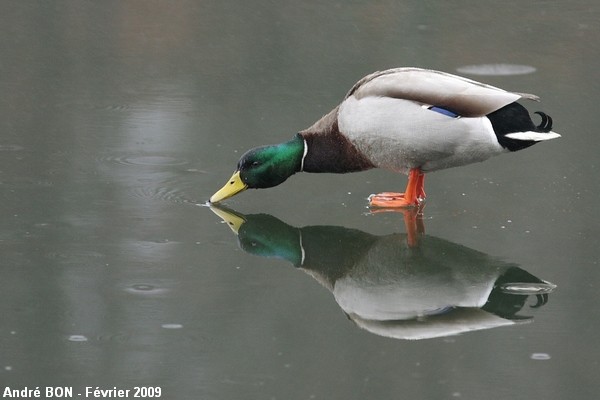
|
Just a thin layer of rain on the frozen pond and it becomes a mirror. This is a good opportunity to play with reflections. |
| [To know more about the Common Mallard] [Next picture] [Previous picture] [Top] |
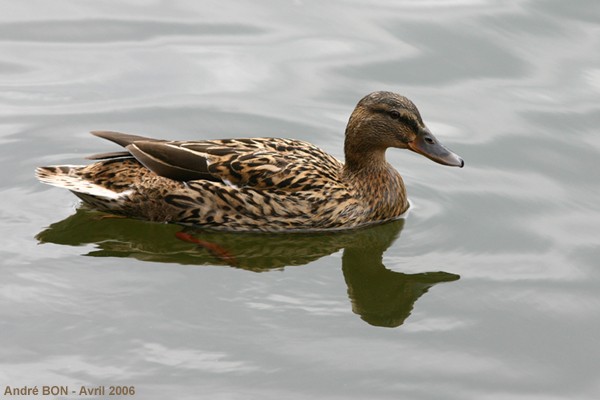
|
Here is the female. I will come back in a few weeks to see the brood. |
| [To know more about the Common Mallard] [Next picture] [Previous picture] [Top] |
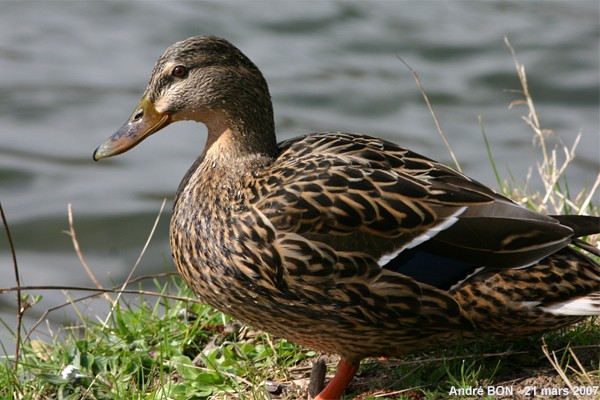
|
These Common Mallards are not shy, you can easily get near around the pond. |
| [To know more about the Common Mallard] [Next picture] [Previous picture] [Top] |
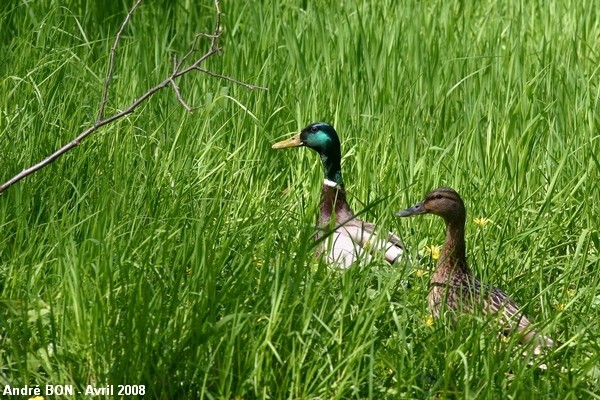
|
Here is a Common Mallard pair walking through high grasses. Are they looking for a nesting place? |
| [To know more about the Common Mallard] [Next picture] [Previous picture] [Top] |
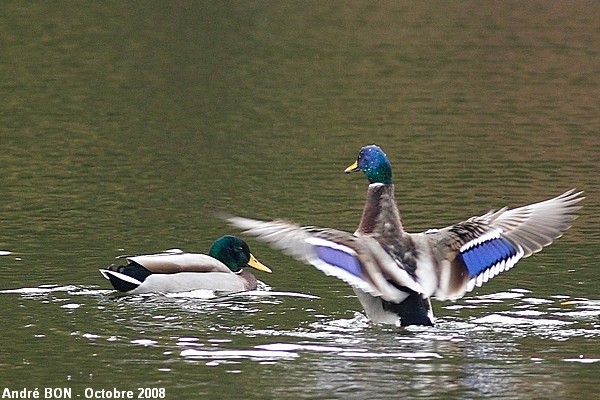
|
The Common Mallard moves on the pond to find food. When it arrives at a good place it leans forward to feed under water. It can also raise up, like here, to dry its plumage. |
| [To know more about the Common Mallard] [Next picture] [Previous picture] [Top] |
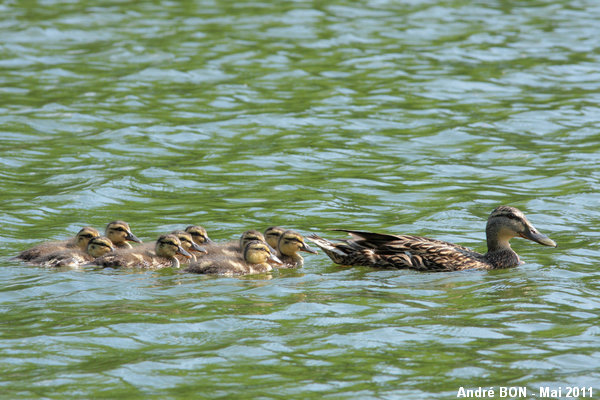
|
Observing small ducklings is always very nice. |
| [To know more about the Common Mallard] [Next picture] [Previous picture] [Top] |
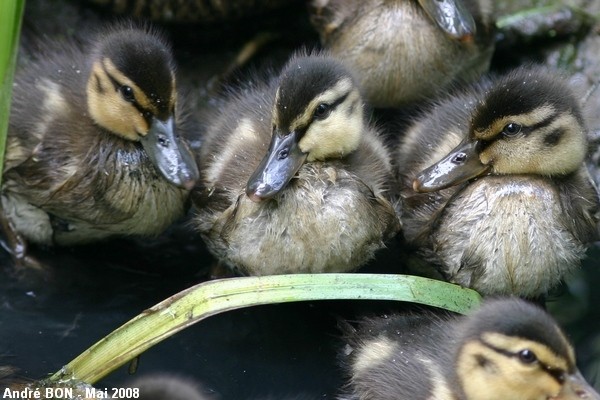
|
Ducklings have a dark stripe on the eyes. |
| [To know more about the Common Mallard] [Next picture] [Previous picture] [Top] |
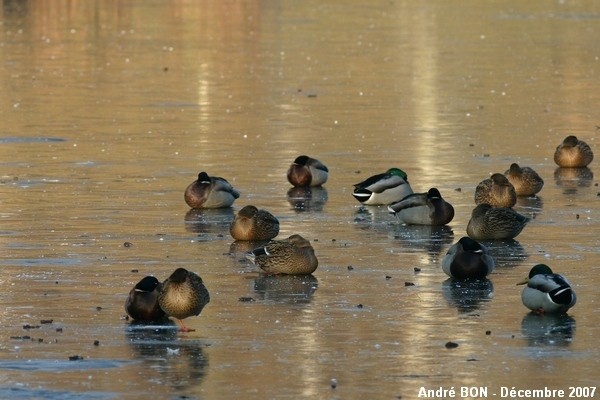
|
Let's keep it in French. You can learn this French expression: "il fait un froid de canard". |
| [To know more about the Common Mallard] [Next picture] [Previous picture] [Top] |
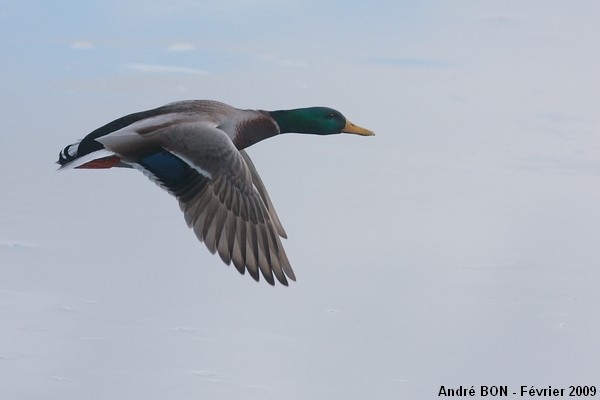
|
First photo session with my new digital camera. The faster autofocus now enables me to take pictures of birds in flight. |
| [To know more about the Common Mallard] [Previous picture] [Top] |
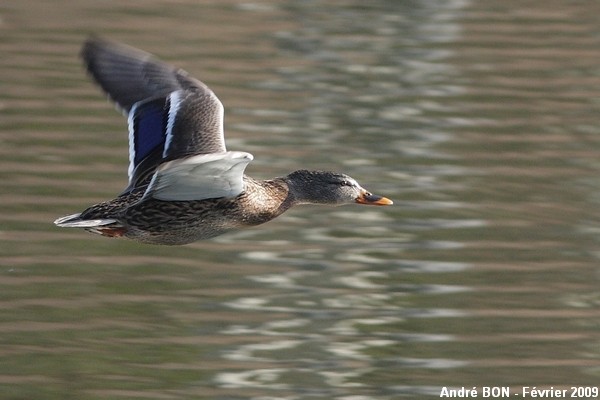
|
The Common Mallard has a straight and fast flight. Taking acceptable pictures is not a very easy task. |